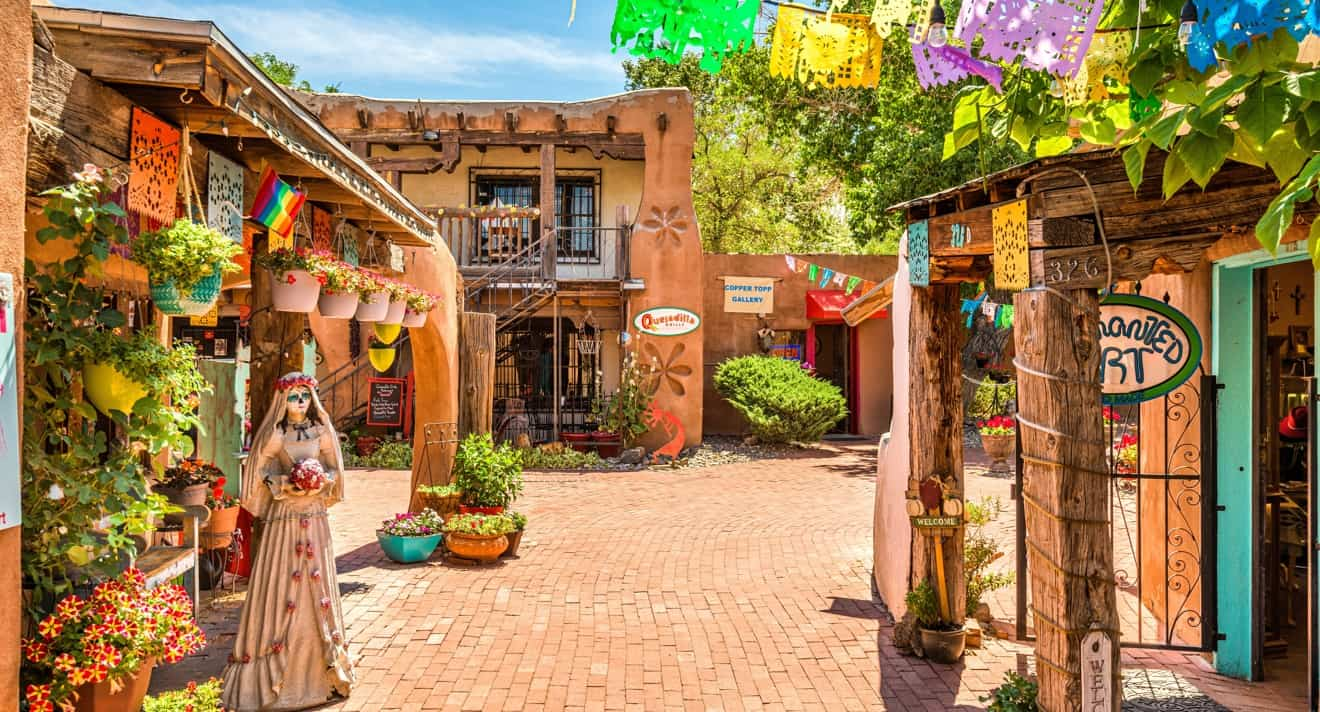Nestled along the Rio Grande River with the Sandia Mountains as a backdrop, Albuquerque, New Mexico is a vibrant desert city known for its rich cultural heritage, unique architecture, thriving arts scene, flavorful cuisine, and abundance of outdoor activities.
| Attraction | Description |
|---|---|
| Petroglyph National Monument | Over 20,000 ancient petroglyphs carved into volcanic rocks. |
| Sandia Peak Tramway | Aerial tramway offering panoramic city and mountain vistas. |
| Old Town Albuquerque | Historic area with adobe buildings, galleries, and shops. |
| National Museum of Nuclear Science & History | Explores the history and science of nuclear energy. |
| Indian Pueblo Cultural Center | Showcases the culture and history of New Mexico’s Native American pueblos. |
| Albuquerque BioPark | Includes a zoo, botanic garden, aquarium, and Tingley Beach. |
| Anderson-Abruzzo Albuquerque International Balloon Museum | Dedicated to the history and science of ballooning. |
| The oldest church in the United States | San Felipe de Neri Church, dating back to the early 1700s. |
| Sandia Mountains | Offers hiking, biking, and skiing with breathtaking views. |
| Albuquerque Museum of Art & History | Features art and history exhibits related to Albuquerque. |
| New Mexico Museum of Natural History & Science | Showcases the region’s prehistoric past with dinosaur fossils. |
| The Turquoise Museum | Explores the significance of turquoise in Native American culture. |
From ancient petroglyphs and historic Old Town to hot air ballooning and a popular State Fair, Albuquerque offers many interesting attractions for visitors. Whether you want to learn about Native American history, explore the outdoors, or simply enjoy the beautiful landscape, you’ll find plenty to see and do in this Southwestern city.
To help you make the most of your time, here is a guide to the top 12 attractions in Albuquerque that you won’t want to miss.
Petroglyph National Monument
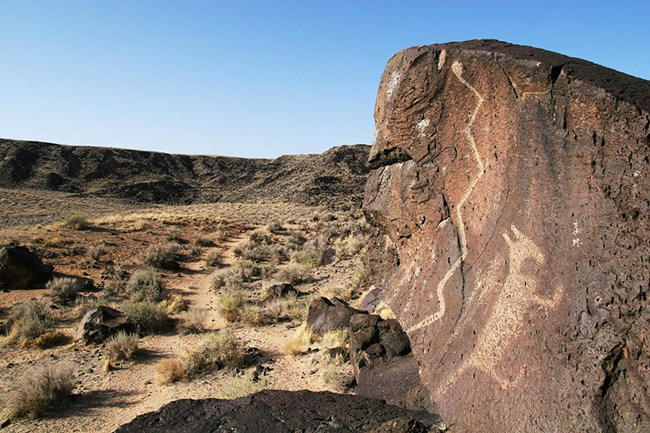
Name and Location: Petroglyph National Monument protects one of the largest petroglyph sites in North America, featuring designs and symbols carved onto volcanic rocks by Native Americans and Spanish settlers 400 to 700 years ago. It stretches 17 miles along Albuquerque, New Mexico’s West Mesa.
History and Significance: Containing over 24,000 images, the petroglyphs of this site illustrate cultural expression by Ancestral Puebloans, early Spanish settlers and indigenous groups. Designated a national monument in 1990, it preserves this archaeological heritage and site access for affiliated tribal communities.
What to Expect: Visitors can view rock art via biking, hiking trails and roadside overlooks. Interpretive signs explain petroglyph meaning and tools used in creation. The visitor center features museum exhibits explaining regional history, native culture and past lifeways tied to the West Mesa landscape. Rangers offer guided hikes.
Visitor Information: The monument is open daily from dawn to dusk year-round. Entry is free. Pets allowed on trails. Visitor center open 8:30am-5pm, closed Thanksgiving and Christmas. Trail lengths vary from 0.2 miles to 2.2 miles over uneven terrain. Restrooms at the visitor center and Boca Negra Canyon only.
Containing over 20,000 ancient petroglyphs carved into volcanic rocks by Native Americans and early Spanish settlers hundreds of years ago, Petroglyph National Monument offers a fascinating glimpse into the past. These images etched into stone showcase a variety of animals, human forms, and geometric shapes.
There are a few protected trails where you can easily view these intriguing rock carvings that date from 400 to 700 years ago. It’s an unforgettable experience to see this priceless piece of cultural heritage up close in a beautiful rugged area northwest of downtown Albuquerque.
Sandia Peak Tramway

Name and Location: The Sandia Peak Tramway transports passengers from the base of the Sandia Mountains in Albuquerque, New Mexico to the 10,378 ft Sandia Peak along a 2.7 mile cable ride described as the “World’s Longest Aerial Tramway.”
History and Significance: Completed in 1966 after 10 years of construction, the tram has offered generations scenic mountain vistas as it ascends nearly 4,000 vertical feet in 15 minutes along one of the world’s longest single reversible cable car spans with no supporting towers between terminals.
What to Expect: Passengers experience breathtaking views through large windows as they leave the desert landscape below before the tram opens atop a mountain hosting hiking trails, picnic facilities and a fine-dining lodge restaurant at the summit.
Visitor Information: The tram runs year-round weather permitting from 9am to 8pm (5pm in winter). Length round trip lasts 60-90 minutes. Fares run from $26 (child) to $38 (adult). Tickets recommended in peak season. Hikers can take the La Luz trail 9 miles downhill instead of the return tram.
For panoramic city and mountain vistas, embark on an aerial tramway rising over 2,700 feet to the summit of the Sandia Mountains. The 15-minute Scenic Sky Ride transports you above deep canyons while the view expands to capture 11,000 foot mountain peaks, the Rio Grande Valley, and even downtown Albuquerque in the distance.
At the top, trails lead to further scenic overlooks of this rugged landscape. You can dine at the High Finance Restaurant or TEN 3 while enjoying the sweeping views. The Sandia Peak Tramway is open year-round making it easy to experience breathtaking high elevation scenery above Albuquerque.
Old Town Albuquerque
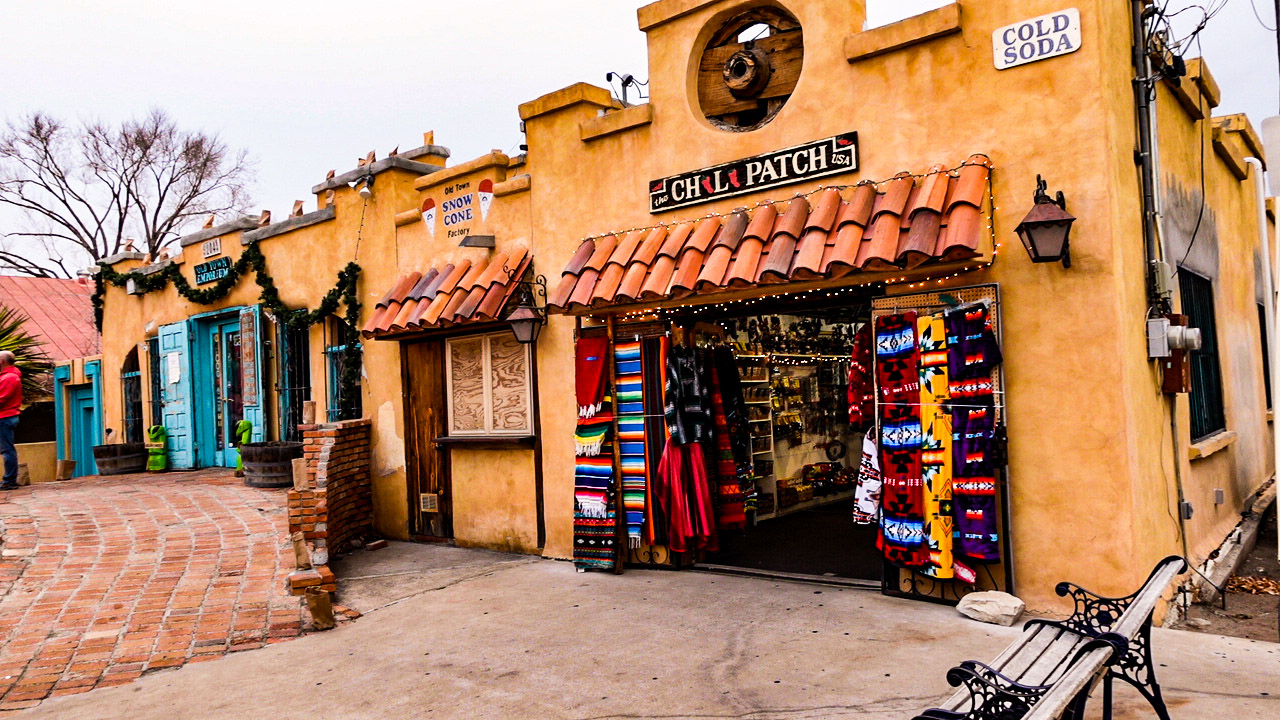
Name and Location: Old Town Albuquerque refers to a historic neighborhood established as a Spanish colonial outpost in 1706, filled with historic adobe buildings, museums, shops, restaurants and parks clustered around the central Plaza. It serves as a heritage tourism hub along Rio Grande Blvd NW.
History and Significance: One of Albuquerque’s most historic areas, Old Town contains architecture, streetscapes and culture harkening back over 300 years to its early Spanish founders and pre-American governance as part of Mexico and later the New Mexico territory, forever shaping regional traditions.
What to Expect: Visitors enjoy shopping handmade arts and crafts, touring museums showcasing frontier lifestyles, dining classic New Mexican cuisine with entertainment by costumed reenactors bringing early settlement into the present with carriage rides, music and seasonal events rooted in traditions.
Visitor Information: Historic Old Town stays active year-round during daytime hours daily when retail and attractions open from at least 10am to 5pm. Free parking lots and paid garages provide access. Walkability and transit connections allow easy exploration between sites.
Wander historic brick lanes, visit unique galleries and shops, and explore original adobe buildings all dating back 300 years in Old Town Albuquerque. Today, this vibrant area near downtown invites visitors to experience what Albuquerque was like when it was founded in 1706 with beautifully preserved architecture, museums, restaurants, and cultural attractions.
A walk through Old Town provides great insights into New Mexico’s past as you browse colorful native artisan wares and watch skilled demonstrations of pottery making, weaving, and more. It’s one of the best places to find an authentic taste of Southwestern culture and heritage in Albuquerque.
National Museum of Nuclear Science & History
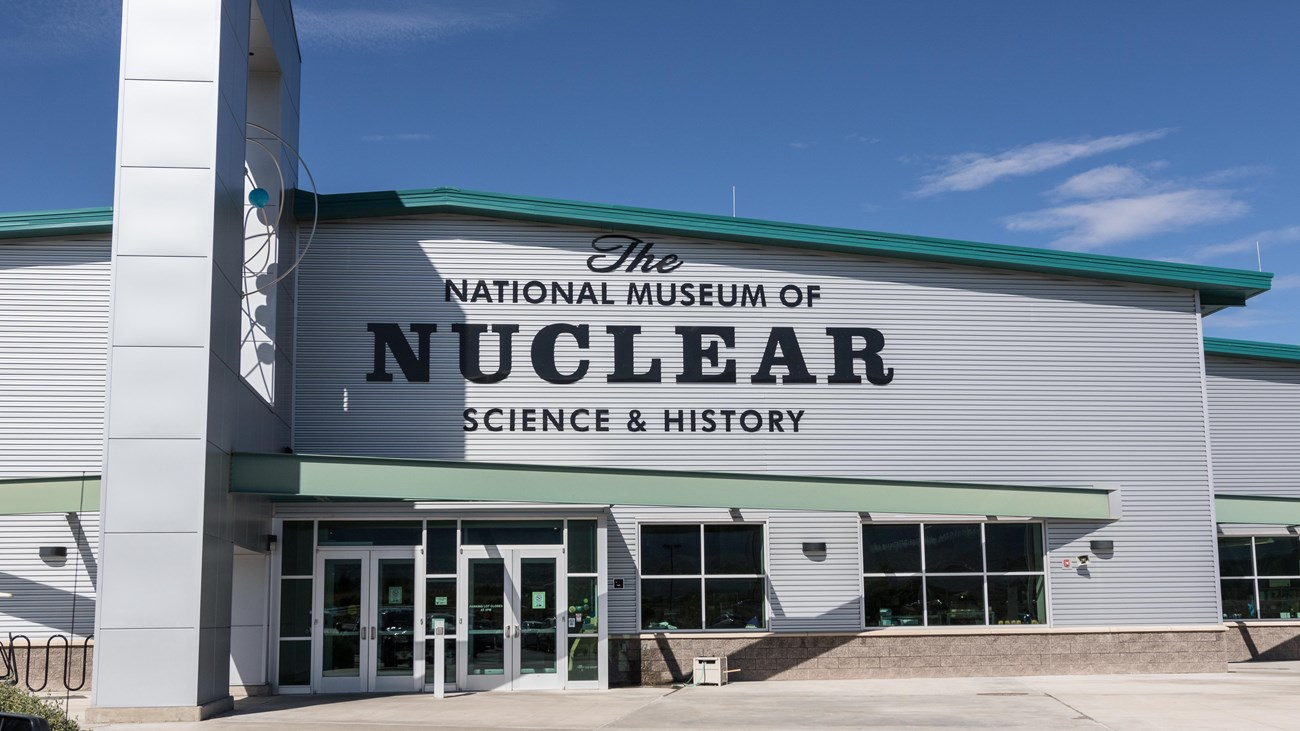
Name and Location: The National Museum of Nuclear Science & History resides at 601 Eubank Blvd SE, Albuquerque, NM 87123 located just off I-40 on Albuquerque’s southeast side.
History and Significance: Founded in 1969 as the Atomic Museum, the site has sought to chronicle the WWII Manhattan Project that developed the first atomic weapons 75 miles north. Exhibiting artefacts central to nuclear technology innovations that still impact energy, medicine and defense around the world makes it nationally important.
What to Expect: Visitors can expect graphically compelling exhibits explaining nuclear physics, showcasing declassified equipment shedding light on 40s era secret cities that harnessed nuclear power, alongside games and simulations conveying concepts around radiation to better understand present world-changing science.
Visitor Information: Open daily 9am–5pm except Thanksgiving and Christmas. General admission runs $10-$12. Discounts for students, seniors 65+ and military. Onsite cafe and gift shop. Free parking available in the adjacent large lot. School education programs available.
Located just outside Albuquerque in the town of Albuquerque, this intriguing museum explores the scientific and historical significance of nuclear energy. Exhibits trace early 20th century atomic developments through World War II’s Manhattan Project into the nuclear age and today’s research.
Fascinating displays feature a broad science collection related to radiation along with artifacts, photographs, films, scripts and first-person accounts. You can even walk through a recreated uranium mine, explore decommissioned nuclear reactors, and climb inside a retired B-52 bomber plane. For those with an interest in nuclear technology, it offers a wealth of information in one place not found elsewhere.
Indian Pueblo Cultural Center

Name and Location: The Indian Pueblo Cultural Center is situated alongside Interstate 40 at 2401 12th St NW, Albuquerque, NM 87104 near Old Town.
History and Significance: Founded in 1976 by New Mexico’s 19 Pueblo tribes to advance understanding of their history, the Cultural Center serves as an essential gateway sharing the Pueblo Indian experience with over 300,000 visitors annually through authentic retail and foods, rotating exhibits and cultural storytelling connecting visitors to traditions persisting for millennia.
What to Expect: Guests can browse Pueblo pottery and jewelry in the Shumakolowa Native Arts shop, taste homemade dishes like Indian tacos, tortillas and frybread only found on reservations at the attached Pueblo Harvest Cafe while exploring the Path of Life–Pueblo History trail chronicling the breadth of New Mexico’s Pueblo legacy.
Visitor Information: The center opens daily at 10am, closing at 5pm (4pm Sundays). Attractions remain open during posted hours when free to access. Closed Thanksgiving, Christmas and New Years Day. Free parking available on site. Hotel, venue and special event rentals available.
Celebrating the legacy and vibrant culture of New Mexico’s 19 Native American pueblos, this first-class museum near downtown provides meaningful insights into Pueblo history and traditions. Extensive timeline exhibits, photographs, music, films, clothing displays and more highlight the richness and innovations of Pueblo society for over 10,000 years.
Make sure to explore the Pueblo Harvest exhibit to discover how crops like corn, beans and squash have sustained the Pueblo people as well as the on-site cafe featuring Pueblo inspired cuisine. It’s an engaging opportunity to expand your understanding of New Mexico’s earliest inhabitants.
Albuquerque BioPark
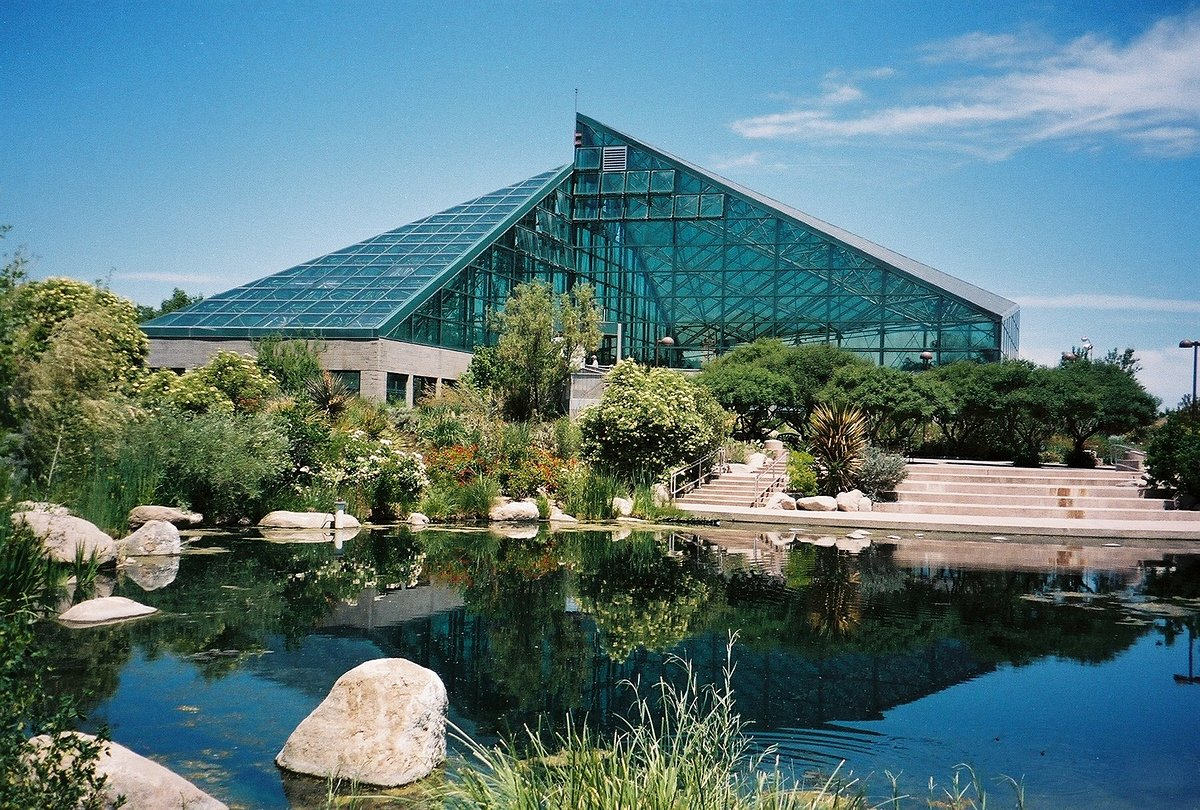
Name and Location: The Albuquerque BioPark is located along Central Ave NW spanning 64 acres with Zoo, Aquarium, Botanic Garden and Tingley Beach sites accessible via connected walkways and trails in the heart of Albuquerque, New Mexico.
History and Significance: Since officially opening in 1996, the BioPark has combined museums, wildlife conservation sites, educational programming and rich horticulture under one nature experience engaging millions of visitors. Its integration as both a community and tourist recreational hub cements the BioPark’s enduring cultural importance.
What to Expect: Guests visit native animal exhibits, immerse in marine life encounters from sharks to jellies, observe rare flora species within multiple garden landscapes and splash in a family water park with slides and fountains across the seamlessly connected complex or via trackless train.
Visitor Information: Regular hours open 9am-5pm daily. Closed on Thanksgiving and Christmas. Combination tickets provide access across all BioPark venues over 1-2 days. Parking $3/hr or $10 daily. City bus routes conveniently connect to attractions. Season passes available.
Composed of a Zoo, Botanic Gardens, Aquarium and Tingley Beach recreation area, the Albuquerque BioPark seamlessly combines animal, plant and natural water ecosystems for visitors to enjoy. Observe exotic wildlife from around the world including leopards, seals, penguins, bears and more in innovative habitat enclosures that allow close-up views above and below water.
The Botanic Garden’s cascading waterfalls, tranquil ponds and New Mexico regional plant life provide many beautiful backdrops for a leisurely stroll. And the on-site Aquarium houses over 300 aquatic species for fascinating underwater encounters with jellies, eels, sharks and sea turtles all showcased in engaging exhibits.
Anderson-Abruzzo Albuquerque International Balloon Museum
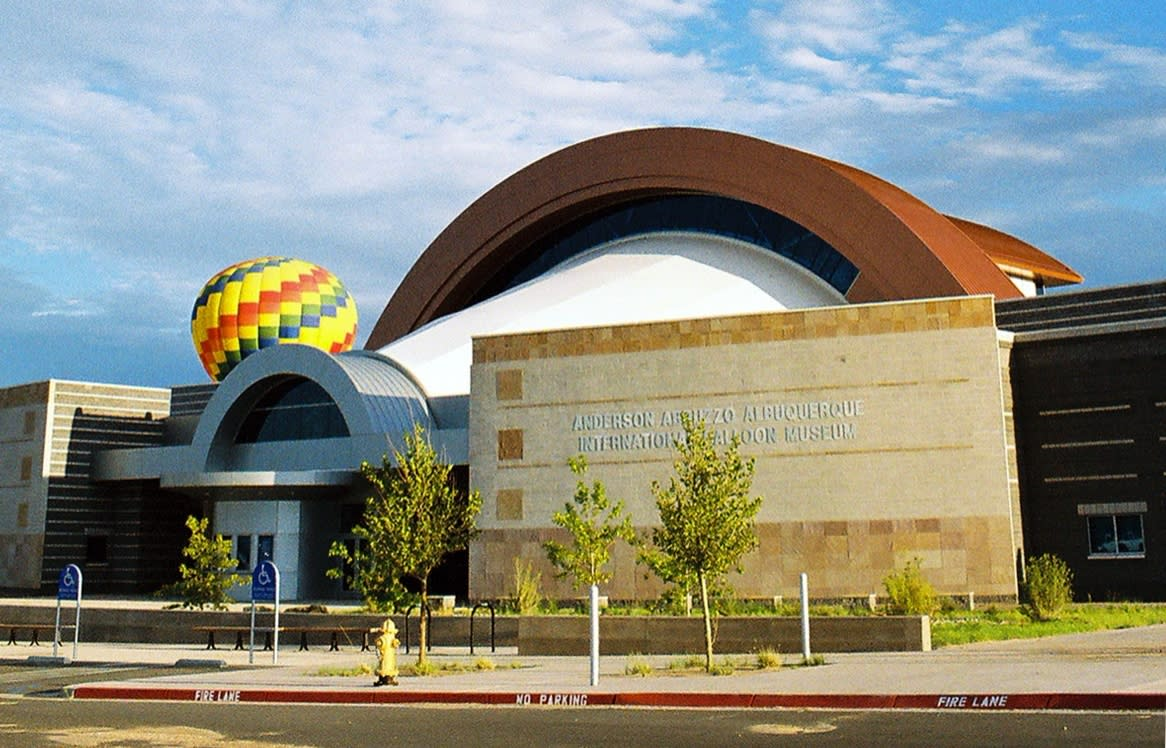
Name and Location: The Anderson-Abruzzo Albuquerque International Balloon Museum resides at 9201 Balloon Museum Dr NE located inside Balloon Fiesta Park along northern Albuquerque’s I-25 corridor.
History and Significance: Named for two pioneering local balloonists, the museum opened in 2005 to celebrate Albuquerque’s ballooning heritage and annual International Balloon Fiesta spanning 50 years as the planet’s most photographed event. Education programs and rotating exhibits chronicle lighter-than-air advancements binding Albuquerque to global ballooning culture.
What to Expect: Visitors can walk among giant interactive balloon exhibits and sculpture art throughout the main hall, observe rotating gallery displays detailing aspects of balloon engineering, design and history, take tethered balloon rides seasonally and access Fiesta launch fields steps away.
Visitor Information: Open daily 9am-6pm except Thanksgiving and Christmas (Abbreviated hours on some holidays). General admission runs $5-$10. Discounts for seniors 65+, military and students. Limited free museum parking and overflow lots nearby during Balloon Fiesta.
Discover the history, culture and science behind hot air ballooning at this informative museum dedicated entirely to lighter-than-air flight. Marvel at the impressive main gallery filled with brilliant colored balloons from across the globe while multimedia exhibits reveal principles of balloon flight, key pioneers and developments through rare artifacts, photographs and videos from the past 300 years.
The Anderson-Abruzzo museum is a top attraction for gaining insights into Albuquerque’s world-famous annual October balloon festival and the soaring passion for innovative balloon aviation found in New Mexico’s high desert landscapes.
The oldest church in the United States
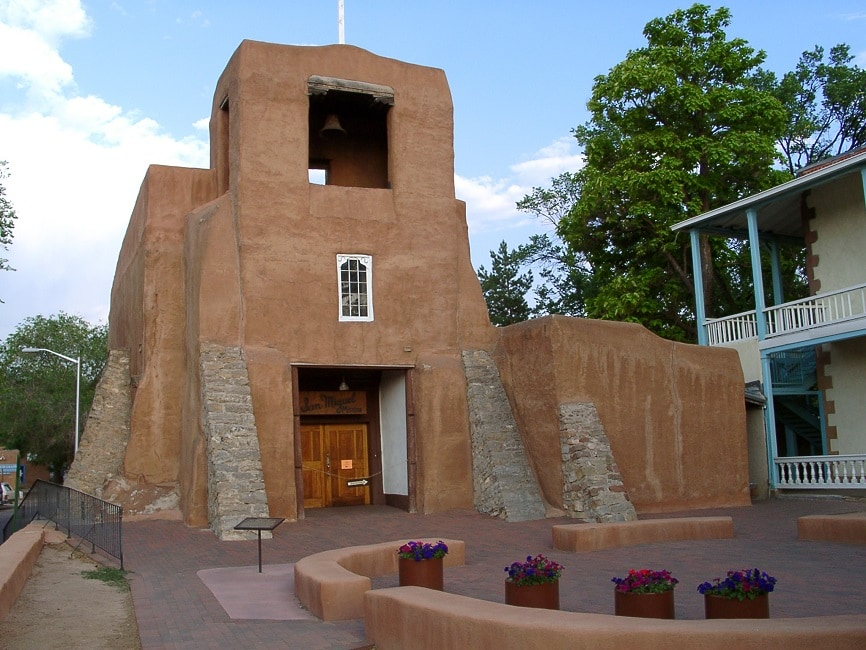
Name and Location: The San Miguel Chapel located at 401 Old Santa Fe Trail, Santa Fe, NM is considered the oldest church structure still standing in the original 13 American colonies and the United States.
History and Significance: Built between approximately 1610–1626 by early Spanish settlers, the adobe church honors Saint Michael dating to Santa Fe’s founding as a permanent colony reflecting Spain’s expansion into North America decades prior to other European powers establishing their first permanent settlements.
What to Expect: Visitors entering the tiny historic adobe mission observe artifacts left by Native Americans and Spanish colonists while visualizing early Catholic mass and ceremony within its still-consecrated sanctuary that remains in use over 400 years since constructed using earthen bricks and by hand.
Visitor Information: As New Mexico’s oldest church the San Miguel Chapel holds cultural services and can be visited year-round Monday-Saturday with self or audio guided church history tours available. Adult admission runs $5, seniors and students $4, under age 12 free.
Dating back to the early 1700s, San Felipe de Neri Church in Old Town Albuquerque holds the distinction of being the oldest original Spanish colonial church still in use in the United States today. The historic adobe building and chapel with its hand carved wooden doors has undergone reconstruction over the years but continues to host regular Catholic mass services.
Inside, intricate woodworking, paintings and a stunning fifty-two foot high altar await to be admired. As the site of many significant events over hundreds of years in Albuquerque, visiting the ancient church provides unparalleled insights into the city’s deeply rooted cultural foundations.
Sandia Mountains
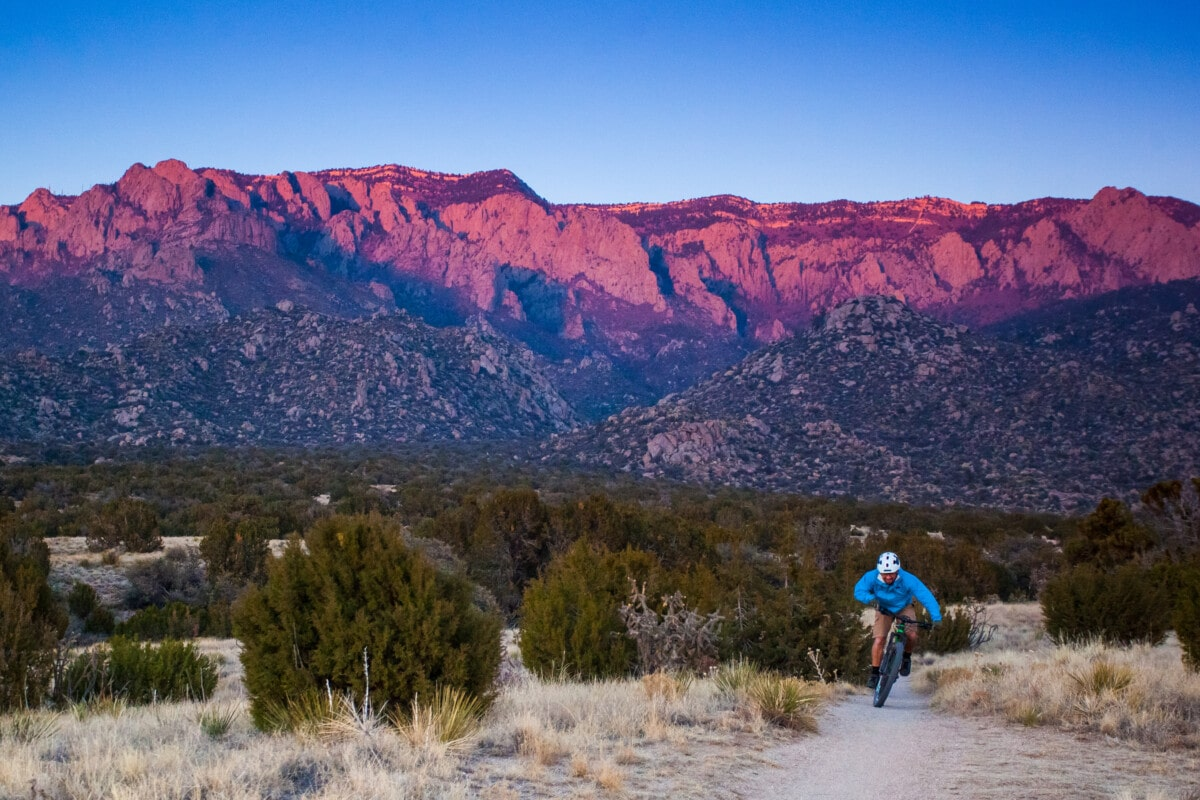
Name and Location: The Sandia Mountains are a 150-square-mile range located along the eastern edge of Albuquerque in central New Mexico, featuring evergreen and mixed woodlands with steep granite cliffs rising to Sandia Crest at 10,678 ft overlooking the Rio Grande Valley.
History and Significance: The Sandia Mountains have been central to native cultures for centuries before becoming home to early Spanish settlers. Today the massive horizontally-lying mountain range supplies water to Albuquerque via snow melt and precipitation absorbed into its thin soils feeding Cibola National Forest while serving as a nature getaway 15 minutes from downtown.
What to Expect: Visitors can hike over 130 miles of forested mountain trails year-round showcasing unique natural landscapes filled with typical high desert wildlife. Winter activities span mountaintop and downhill skiing. Panoramic views stretch across central New Mexico from ridge lines and overlooks.
Visitor Information: Numerous trailheads from the foothills to the main crest provide access across varying ability levels. The Sandia Peak Tramway transports hikers nearly 4,000 vertical feet to the summit during open hours when its restaurant is also open. Parking fees vary per site.
Rising dramatically east of Albuquerque to almost 11,000 feet in elevation, the towering Sandia Mountains provide a beautiful natural backdrop to the city with loads of recreational opportunities to enjoy. Take a ride on the Sandia Peak Aerial Tram ascending over 2,700 feet for boundless views or choose from numerous hiking trails ranging from easy nature paths to challenging summits climbs through conifer forests.
For mountain biking, the La Luz and Foothills trails offer thrilling singletrack rides while in winter, you can ski fresh powder at Sandia Peak Ski Area, New Mexico’s only resort located within city limits. With year-round accessibility, the Sandia’s present unlimited ways to experience New Mexico’s inspiring desert mountain beauty.
Albuquerque Museum of Art & History
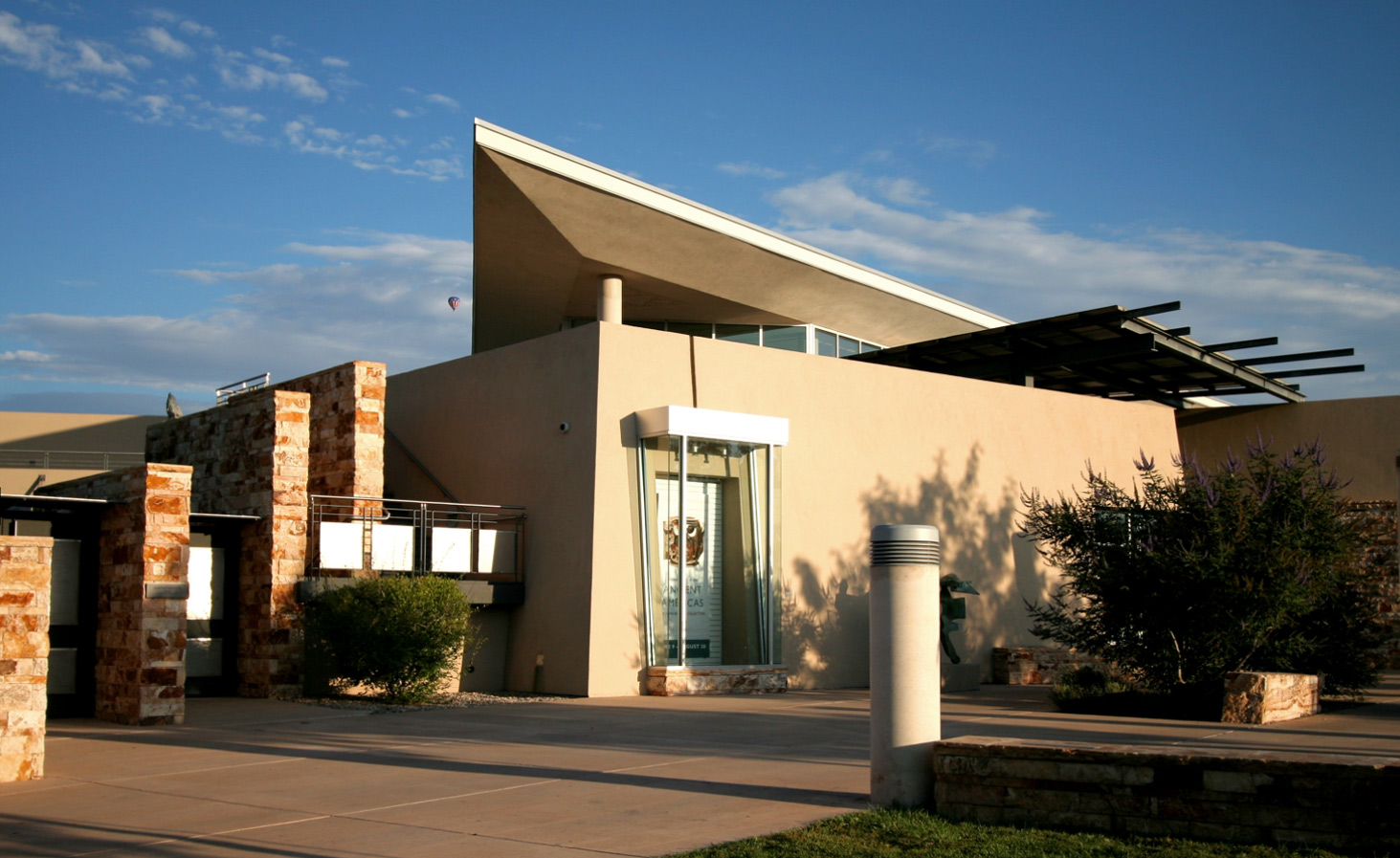
Name and Location: The Albuquerque Museum is located at 19th Street and Mountain Road NW bordering Route 66 and Old Town in downtown Albuquerque, New Mexico.
History and Significance: Opened in 1979, the Albuquerque Museum’s focus on local heritage and artists makes it exceptionally meaningful to the community. Exhibitions feature notable New Mexican artworks conveying multiple perspectives while the History department chronicles Albuquerque’s past from native peoples into today.
What to Expect: Visitors browse New Mexico artists specializing in modern art forms spanning sculpture, painting, photography and prints with holdings numbering over 6,000 pieces. Historic galleries using costumes, artifacts, archival film and photos recount people that shaped Albuquerque from its earliest rhythm and traditions through varying eras into the present.
Visitor Information: Open Tues-Sun 9am-5pm, closed Mondays. Adults $4-6 based on extras like ticketed exhibits. Children under 12 free. Metered parking lines surrounding roads and small lot adjacent. Public transit connections nearby with ART Bus routes dropping at the courtyard door.
Tracing cultural developments in Albuquerque from early native settlements to today’s innovative artistic landscape, the Albuquerque Art Museum near Old Town provides engaging insights for visitors through impactful artwork displays, films, events and educational programs.
The permanent exhibit beautifully showcases the area’s prominent connection to art whether it be ancient Pueblo pottery, Hispanic religious paintings, Native American textiles, modern landscape photography and much more. Be sure to also browse the well-curated museum store filled with distinctive Southwestern and Albuquerque themed gifts, jewelry, books and works from local artisans.
New Mexico Museum of Natural History & Science
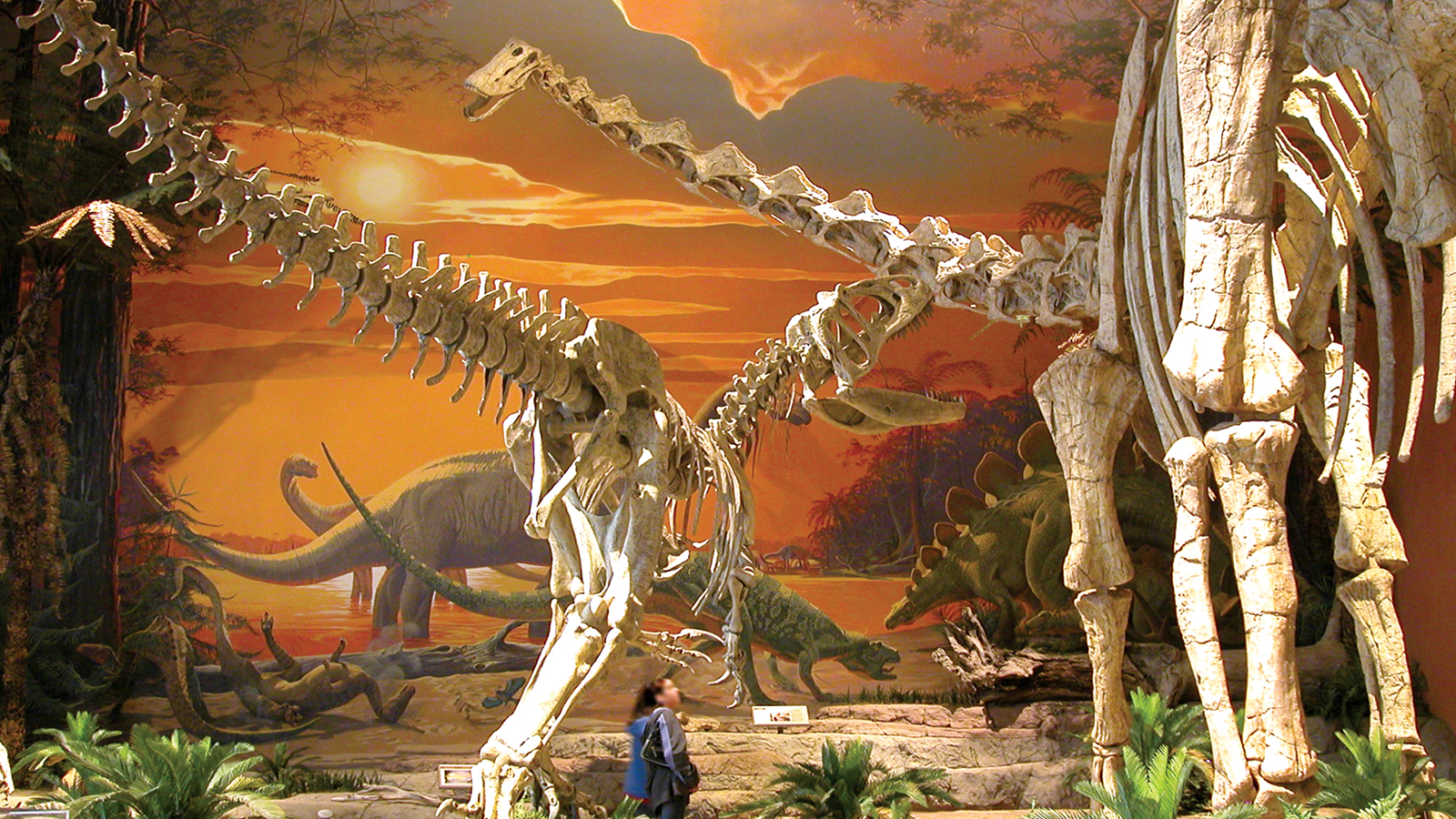
Name and Location: The New Mexico Museum of Natural History & Science resides in Albuquerque’s Old Town district on the northeast corner of Mountain Rd and 18th Street NW adjacent to Route 66, IMAX theater and historic church.
History and Significance: Founded in 1986, New Mexico’s designated natural history institution contains world-class paleontology resources shedding light on regional prehistory including Triassic fossils up to 200 million years old while promoting wider public science education among 220,000 annual visitors through multimedia programs across an architecturally impressive campus.
What to Expect: Patrons can examine dinosaur remnants, tour Native botanical and wildlife exhibits, view geology and planetary displays, catch educational IMAX documentaries, attend public lectures by scientists and walk among Bronze Age artifacts from New Mexico’s long human history all within interconnected indoor/outdoor museum spaces often hosting cultural events.
Visitor Information: Open daily 9am-5pm except major holidays. General admission $10 adults, children under 16 free. Metered parking off Museum Hill circular drive. Walking connections to Old Town sites and Route 66 via Mountain Road provide active access through the historic corridor.
At New Mexico’s most visited museum located on the edge of Old Town, discover the region’s rich prehistoric past showcased through fossils of dinosaurs, iconic Ice Age mammals like mammoths, saber tooth tigers, giant ground sloths and more all sourced from nearby excavation sites.
In addition to world class paleontology displays, the museum complex features exhibits spotlighting Southwest geology, Native cultures, a planetarium and large format 3D movie theater to enjoy stunning nature films. It’s an exciting place for kids and adults alike to dig deeper into understanding New Mexico’s natural wonders across shifting landscapes and climate through the ages.
The Turquoise Museum

Name and Location: The Turquoise Museum resides in a scenic two-story building located along Santa Fe’s Old Town Plaza steps away from the New Mexico State Capitol at Governor Miles Kendrick Avenue, Santa Fe, New Mexico.
History and Significance: Founded in 1996 to preserve cultural and scientific knowledge around natural turquoise, the non-profit Turquoise Museum represents the world’s most extensive collection of authentic museum-quality turquoise originating from over 150 mines on public display with global significance as the premier institution educating the public on the treasured blue-green mineral dating back millennia in the region.
What to Expect: In addition to eyeing rare turquoise specimens from the Southwest and across the globe valued at over $3 million dollars, visitors glimpse decorative works by famed indigenous jewelers and evolve their understanding around turquoise grading, processing, geology, imitation detection and spiritual importance conveyed through artifacts central to regional native traditions.
Visitor Information: Open year-round Mon-Sat 10am-5pm, Sundays 1pm-5pm. Self or guided tours run 30-45 minutes. Adult admission $15, student and senior discounts. Validated parking at nearby public garages otherwise street parking where available. The gift shop offers certified turquoise pieces among other items.
Located in the heart of historic Old Town, the Turquoise Museum provides a wonderful introduction to New Mexico’s famous blue-green gemstone adored by Native cultures for over a millennium. Explore authentic artifacts and silver work from the Southwest’s most important turquoise producing mines alongside the largest collection of rare turquoise specimens from across the globe totalling over 7500 pieces.
Knowledgeable guides share legends, lore and fascinating details on source locations, tribal designs and distinguishing qualities of American turquoise, making the museum a delightful experience for further discovering what makes New Mexico’s state gem a beloved icon.
Conclusion
From ancient petroglyphs and the Rio Grande River valley to colorful hot air balloons floating among the high desert mountains, Albuquerque encapsulates the rich cultural spirit and natural beauty found across New Mexico.
With vibrant art scenes, historic architecture, engaging museums, access to the rugged Sandia peaks and so much more, many memorable attractions await in Albuquerque sure to delight visitors of all ages. Use this guide to craft your own unique Southwestern adventure that connects both the past and present dynamic landscape found here.

